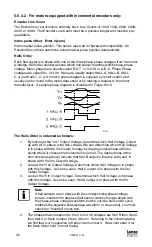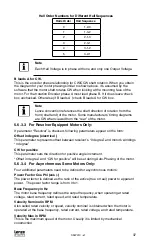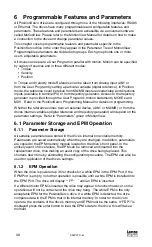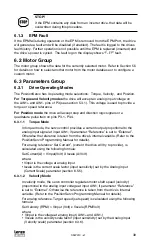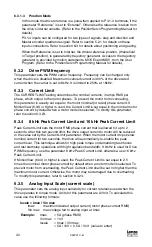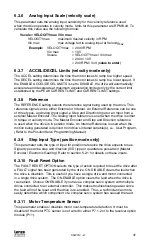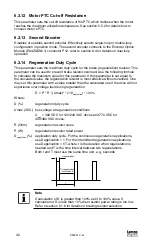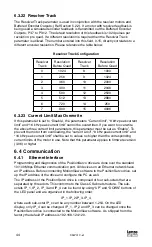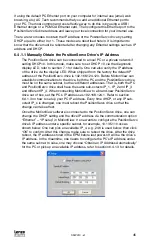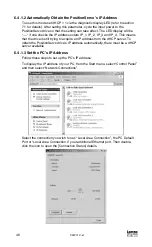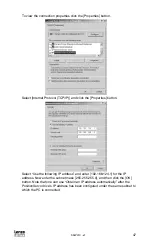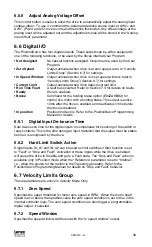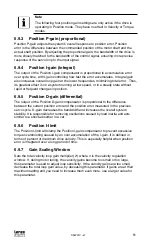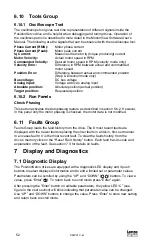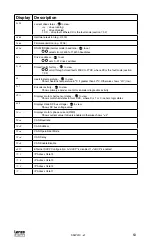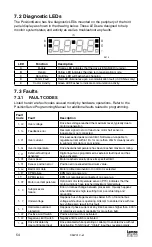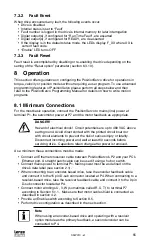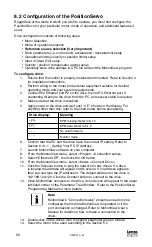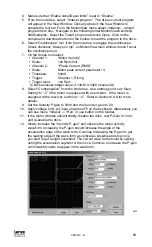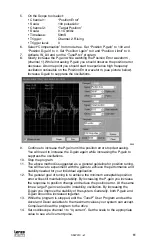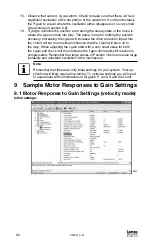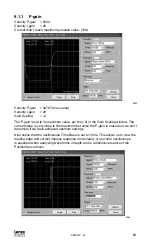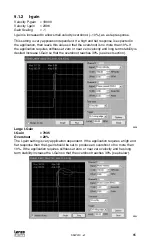
S94P01C -e1
50
6.7.3 At Speed
Specifies the speed window center used with the “In speed window” output.
These last two parameters specify speed limits. If motor shaft speed is within these
limits then the condition AT SPEED is set to TRUE in the internal controller logic. The
AT SPEED condition can also trigger a programmable digital output, if selected.
For example if “AT SPEED” is set for 1000 RPM, and the “SPEED WINDOW” is set for
100, then “AT SPEED” will be true when the motor velocity is between 950 -1050 RPM.
6.8 Position Limits
6.8.1 Position Error
Specifies the maximum allowable position error in the primary (motor mounted)
feedback device before enabling the “Max error time” clock (described next). When
using an encoder, the position error is in post-quadrature encoder counts. When using
a resolver, position error is measured at a fixed resolution of 65,536 counts per motor
revolution.
6.8.2 Max Error Time
Specifies maximum allowable time (in mS) during which a position error can exceed
the value set for the “Position error” parameter before a Position Error Excess fault is
generated.
6.8.3 Second Encoder Position Error
Specifies the maximum allowable error of the second encoder in post quadrature
encoder counts before enabling the “Second encoder max error time” clock (described
next).
6.8.4 Second Encoder Max Error Time
Specifies maximum allowable time (in mS) during which the second encoder’s position
error can exceed the value set for the “Second encoder position error” parameter
before a Position Error Excess fault is generated.
6.9 Compensation Group
6.9.1 Velocity P-gain (proportional)
Proportional gain adjusts the system’s overall response to a velocity error. The
velocity error is the difference between the commanded velocity of a motor shaft and
the actual shaft velocity as measured by the primary feedback device. By adjusting the
proportional gain, the bandwidth of the drive is more closely matched to the bandwidth
of the control signal, ensuring more precise response of the servo loop to the input
signal.
6.9.2 Velocity I-gain (integral)
The output of the velocity integral gain compensator is proportional to the
accumulative error over cycle time, with I-gain controlling how fast the error
accumulates. Integral gain also increases the overall loop gain at the lower
frequencies, minimizing total error. Thus, its greatest effect is on a system running at
low speed, or in a steady state without rapid or frequent changes in velocity.

